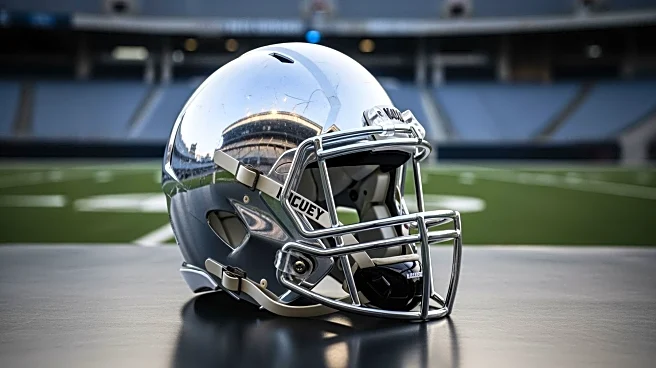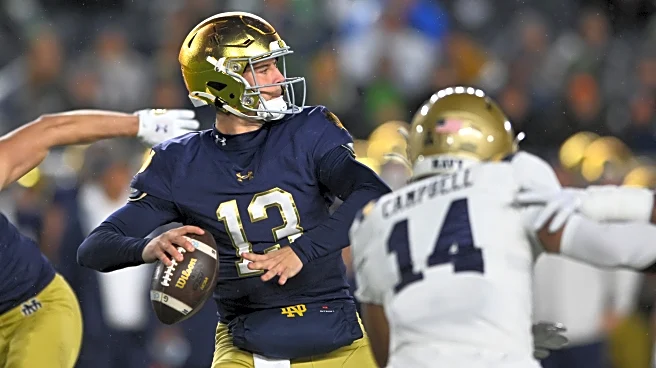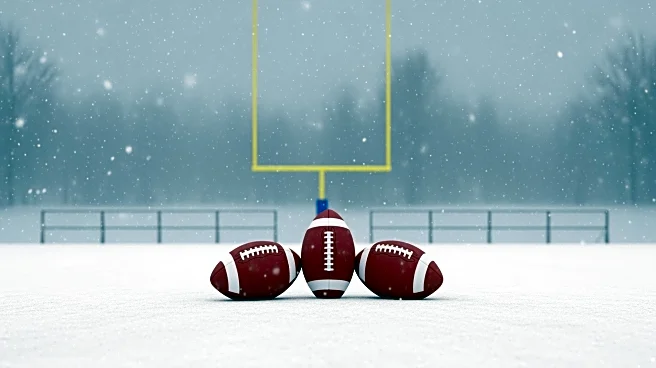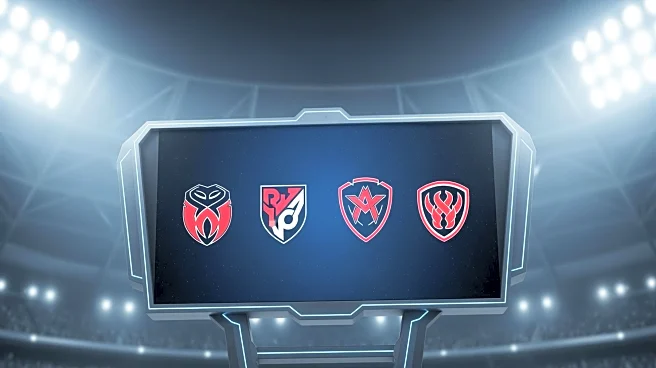What's Happening?
Blake Horvath, the starting quarterback for the Navy Midshipmen, was ruled out of the game against Notre Dame due to an upper body injury sustained in a previous match against North Texas. Horvath's absence
is a significant setback for Navy, as he has been a key player in their successful season, leading the team to a 7-1 record. Despite being seen warming up, Horvath's participation was a game-time decision, and the coaching staff opted for caution, prioritizing his recovery for upcoming games. Junior Braxton Woodson stepped in as the starting quarterback, bringing experience from his previous career start.
Why It's Important?
Horvath's injury impacts Navy's offensive capabilities and their chances in the game against Notre Dame, a crucial match for their College Football Playoff aspirations. His absence could affect Navy's performance and standing in the American Athletic Conference. The decision to rest Horvath reflects strategic planning by the coaching staff, aiming to preserve his health for future important games. This situation underscores the challenges teams face with player injuries and the need for effective backup strategies.
What's Next?
Navy will focus on preparing for their next game against South Florida, where Horvath may return if his recovery progresses well. The team will also have a bye week before facing Memphis, providing additional time for Horvath's recuperation. The coaching staff will likely continue to evaluate Horvath's condition and adjust their strategies accordingly. Braxton Woodson's performance as the interim quarterback will be crucial in maintaining Navy's competitive edge in upcoming matches.
Beyond the Headlines
Horvath's injury highlights the physical demands and risks associated with college football, emphasizing the importance of player health and safety. This situation may prompt discussions on injury management and the role of medical staff in ensuring athletes' well-being. The decision to prioritize Horvath's recovery reflects a broader trend in sports towards cautious handling of player injuries, balancing immediate performance needs with long-term health considerations.













